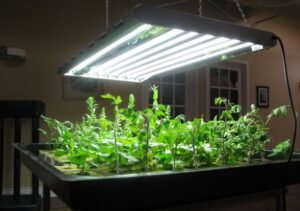Ultraviolet radiation can play pivotal yet often misunderstood or overlooked roles in plant cultivation. UV wavelengths stimulate key photomorphogenesis and protective pigment pathways while facilitating pollinators. However, excessive UV can create phytotoxic effects as well. This necessitates precise supplementation strategies to leverage unique UV benefits while controlling exposure levels. In this comprehensive guide to UV […]

UV Light for Plants Growing

How to Use Hydroponic Grow Lights?

LED vs HPS Grow Lights: What is the Difference – Tutorial

Types of Grow Lights for Indoor Plants – Tutorial

How to Use LED Grow Lights for Indoor Plants – Tutorial

How to Choose Led Grow Light for Hydroponic Garden?

Fluorescent Grow Lights for Indoor Gardening
How to Use Hydroponic Grow Lights?
Indoor gardening with hydroponics is becoming increasingly popular, allowing people to grow fresh herbs, vegetables, and flowers year-round. One key component of any hydroponic system is proper lighting that mimics natural sunlight. Using the right type of hydroponic grow light is essential for healthy plant growth and maximum yields when growing indoors. In this comprehensive […]
LED vs HPS Grow Lights: What is the Difference – Tutorial
Indoor gardening has become increasingly popular in recent years, and as a result, the demand for high-quality grow lights has skyrocketed. LED and HPS grow lights are two of the most popular types of grow lights available in the market today, and many indoor gardeners face a tough choice when it comes to deciding between […]
Types of Grow Lights for Indoor Plants – Tutorial
Indoor gardening has become increasingly popular, especially with the rise of urban living and the need for green spaces. However, not all indoor spaces provide sufficient natural light for plants to thrive. This is where grow lights come in. Grow lights are artificial lighting systems that simulate natural sunlight to support plant growth indoors. There […]
How to Use LED Grow Lights for Indoor Plants – Tutorial
If you enjoy indoor gardening, it’s crucial to provide your plants with everything they need to thrive, including proper lighting. In addition to water and nutrients, plants require sufficient light to grow. If you’re growing plants indoors, you’ll need to select the best lighting option. While there are several choices available, LED grows lights are […]